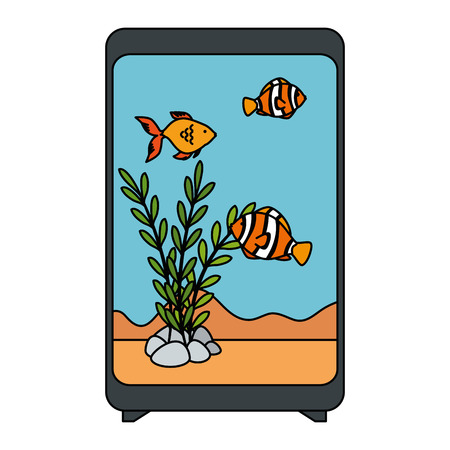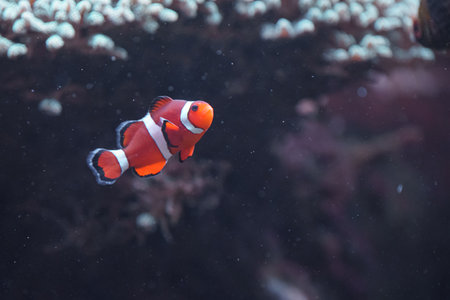Understanding Your Space: Assessing UK Home Layouts
Before you dive into the world of aquariums, it’s essential to consider the unique characteristics of British homes and how they can influence your choice of aquarium location. From charming terrace houses in bustling city centres to cosy flats in converted Victorian buildings, the layout of UK homes varies widely. Terrace houses often have narrow rooms and limited wall space, while modern flats might offer open-plan living but less flexibility when it comes to weight-bearing floors. Detached and semi-detached homes could provide more freedom, but even then, factors like radiator placement and bay windows play a role. To help you visualise these differences, here’s a quick comparison:
| Home Type | Typical Layout Features | Aquarium Placement Considerations |
|---|---|---|
| Terrace House | Narrow rooms, shared walls, limited natural light | Avoid blocking walkways; opt for compact tanks; consider under-stairs or alcove spaces |
| Flat (Apartment) | Open-plan living, potential floor weight limits | Check structural support; place near power sources but away from radiators and direct sunlight |
| Semi-Detached/Detached | Larger rooms, possible conservatories or bay windows | Utilise spacious corners; avoid temperature fluctuations near windows or doors |
Taking time to assess your specific home layout ensures that your aquatic adventure starts off on the right fin, giving both you and your future fishy friends the best experience possible.
Light and Heat: Finding the Right Environmental Conditions
If you’re setting up a home aquarium in the UK, getting the light and heat balance right is a proper adventure—almost like planning a cross-country hike with your fishy friends! British weather is famously unpredictable, and our daylight hours shift dramatically from winter’s early sunsets to summer’s lingering evenings. This means where you place your tank can make all the difference for your aquatic pets’ wellbeing.
The Challenge of British Weather
In Blighty, we know that sunshine isn’t always guaranteed. During the dark winter months, natural light can be scarce, while in summer, direct sunlight might pour in and overheat your aquarium. It’s crucial to avoid placing your tank near south-facing windows or conservatories where sunlight can create dramatic temperature swings or encourage algae growth.
Fluctuating Daylight Hours
From long June days to gloomy January afternoons, our changing daylight hours mean you’ll want to keep your aquarium lighting consistent. Investing in a timer for your tank lights helps mimic a natural day-night cycle, which keeps your fish active and healthy regardless of what’s happening outside.
Radiator Placements and Room Heating
UK homes often rely on radiators for heating, but placing an aquarium too close can spell trouble. A sudden blast of heat when the central heating kicks in could stress your aquatic pals and upset the water temperature balance. Here’s a quick comparison to guide your placement:
| Location Feature | Risks for Aquarium | Best Practice |
|---|---|---|
| Near Radiator | Sudden heat changes; uneven temperatures | Keep at least 1 metre away from any radiator |
| By Window (Direct Sunlight) | Overheating; excessive algae growth | Place away from direct sunlight; use blinds if necessary |
| Internal Wall (No Radiator) | More stable temperatures; less light fluctuation | Ideal spot for most tanks |
Top Tips for UK Households:
- Avoid extremes: neither too hot nor too cold—your fish will thank you!
- Use blackout curtains or blinds if the only suitable space gets occasional direct sun.
- Aquarium heaters and thermometers are essential for keeping conditions steady in chilly months.
Your Home Aquarium Adventure Awaits!
Choosing the right location in a UK home is about balancing those quirky weather patterns with creature comfort. With a bit of planning—and maybe some British ingenuity—you’ll create an environment where both you and your aquatic companions can relax, come rain or shine.

3. Neighbourly Vibes: Minimising Disturbances and Maximising Enjoyment
When it comes to picking the perfect place for your home aquarium, it’s not just about the view — it’s also about keeping the peace in your household, and giving your aquatic pets the best chance at a happy life. In true British spirit, maintaining harmony means being mindful of both your scaly residents and your human neighbours. Aquariums thrive in calm environments, so steer clear of busy corridors, entryways, or spots near thumping washing machines and telly speakers. Fish are sensitive souls; too much commotion or vibration can leave them feeling stressed, which isn’t what we want for our finned friends.
The Best & Worst Spots at Home
| Ideal Aquarium Locations | Spots to Avoid |
|---|---|
| Living rooms with low footfall | Next to front doors or hallways |
| Bedrooms (if peaceful and temperature-controlled) | Beside speakers or TVs |
| Home offices (quiet corners) | Close to kitchen appliances (fridges, dishwashers) |
Why It Matters
Placing your tank away from noisy gadgets and high-traffic areas ensures that both you and your fish can relax. Not only does this reduce stress for your aquatic companions, but it also lets you enjoy the tranquil beauty of your tank without constant interruptions. Plus, in a classic UK semi-detached or terraced home where space is precious and walls may be shared, it’s considerate to avoid locations that might send vibrations next door.
Top Tip:
If you’ve got curious cats or playful pups around, make sure their favourite napping spots aren’t right beside the aquarium — it keeps both pets and fish calm, and adds an extra layer of neighbourly consideration inside your own four walls.
4. Safety First: Avoiding Leaks and Ensuring Sturdy Placement
When it comes to setting up your home aquarium in the UK, safety should always be at the forefront. British homes are a delightful mix of Victorian terraces, modern flats, and classic semis, each with their own quirks when it comes to flooring and furniture. Ensuring your aquarium is placed securely not only protects your fishy friends but also keeps your home in tip-top shape.
Solid Furniture Matters
Your aquarium needs a strong, stable base—think solid wood stands or purpose-built aquarium cabinets. Avoid placing tanks on wobbly side tables or anything that wasn’t designed to support significant weight. Remember, even a small 60-litre tank can weigh over 70kg once filled with water, gravel, and décor!
| Furniture Type | Recommended? | Notes |
|---|---|---|
| Aquarium Stand/Cabinet | Yes | Specifically designed for tanks; best choice for stability |
| Solid Oak Table | Maybe | Check weight capacity; avoid if antique or fragile |
| IKEA-Style Flatpack Unit | No | Often not robust enough for heavy aquariums |
| Coffee Table/Sideboard | No | Tends to be too low or unstable for safe placement |
Avoid Carpeted Areas and Plan for Spills
Avoid placing your tank on carpeted floors whenever possible. Carpets can trap moisture from accidental spills or leaks, leading to mould (a British homeowner’s nemesis) and unpleasant odours. Instead, opt for laminate, vinyl, or tile flooring—these typical UK choices are far easier to clean up after an adventurous water change or an unexpected splash!
Quick Tips for British Floors:
- Laminates & Vinyls: Easy to wipe down after minor spills.
- Tiles: Best for larger tanks; completely waterproof but can be cold underfoot.
- Carpets: Only as a last resort—use a waterproof mat underneath if unavoidable.
- Wooden Floorboards: Check for levelness and protect with a mat to guard against drips.
BONUS: Prepare for the Unexpected!
Keen UK aquarists often keep a towel or mop handy nearby—just in case. Planning ahead for those little mishaps means less stress for you and more fun watching your underwater world thrive.
5. British Wildlife Meets Your Tank: Managing Natural Light and Pests
If you’re setting up an aquarium in your UK home, it’s not just about the interior décor—our beloved British wildlife deserves a thought too! From nimble neighbourhood cats to those cheeky magpies peering through your classic sash windows, local critters might fancy a peek (or even a paw) at your aquatic friends. Here’s how to strike the right balance between natural light, safety, and keeping curious visitors at bay.
Mind the Sunlight Through Sash Windows
Those beautiful sash windows are a staple of UK homes, letting in heaps of light. While a bit of sunlight brings out your tank’s colours, too much can lead to rapid algae growth and temperature swings that stress fish. Consider these aspects:
| Window Orientation | Effect on Aquarium |
|---|---|
| South-facing | Maximum sunlight – risk of overheating and algae blooms |
| East/West-facing | Moderate morning or afternoon sun – monitor closely |
| North-facing | Least direct sunlight – usually safest for tanks |
Keep Out Those Curious Creatures
The UK is brimming with inquisitive animals. Whether it’s your own feline friend or a neighbourhood magpie, make sure your aquarium is covered securely. Not only does this keep pets out, but it also helps regulate humidity and prevent unwanted debris from entering.
Pest-Proofing Checklist
- Install a sturdy lid or cover on your tank
- Avoid placing tanks near open windows where birds or insects might enter
- Use window screens if you regularly open sash windows nearby
Cats & Birds: A Quick Comparison Table
| Visitor | Potential Risk | Prevention Tip |
|---|---|---|
| Cats | Tapping glass, knocking over decorations, attempting to fish! | Secure lids; place tank on sturdy stands away from climbing spots |
| Magpies & Other Birds | Pecking at glass, startling fish, potential droppings near open windows | Keep windows closed or use screens; draw curtains during peak sunlight hours |
By accounting for these uniquely British scenarios, you’ll ensure both your fish and native wildlife stay happy—and your tank remains the peaceful centrepiece of your home adventure.
Access and Maintenance: Keeping Things Fuss-Free
When it comes to setting up your home aquarium, one of the most practical things you can do is to choose a spot that makes regular upkeep a breeze. Let’s face it—no one in the UK wants to traipse through the house with buckets of water or risk spilling fish food all over the sitting room carpet. Selecting a location that ensures fuss-free access for cleaning, water changes, and daily feeding will make life easier for both you and your finned friends.
What Makes a Location Low-Maintenance?
You’ll want to avoid cramped corners, awkward alcoves, or anywhere blocked by heavy furniture. If you have to squeeze past armchairs or move half the contents of your lounge just to reach your tank, maintenance will quickly become a chore. Choose somewhere with plenty of space around the aquarium for easy manoeuvring, and where splashes won’t bother precious furnishings.
Quick-Reference Table: Aquarium Access Checklist
| Factor | Why It Matters | UK Household Tip |
|---|---|---|
| Space Around Tank | Prevents spills & allows for easy access | Avoid placing against radiators or under windowsills |
| Proximity to Water Source | Makes water changes more convenient | Near a kitchen or utility room is ideal |
| Stable Flooring | Supports weight of tank & prevents wobbling | Solid floors over carpets or old floorboards |
Top Tip for British Homes
If you’re living in a classic Victorian terrace or a modern flat, keep in mind that access might be tighter than in larger homes. A hallway spot might look tempting but could turn your regular tank maintenance into an obstacle course. Instead, opt for somewhere with clear pathways and enough elbow room for all your aquatic adventures.
Ultimately, picking the right location sets the tone for an enjoyable aquarium experience—one where you can easily care for your fish without turning your living space upside down. Keep it simple, keep it tidy, and everyone (including your pets) will be chuffed!


